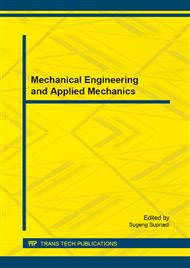p.119
p.125
p.131
p.137
p.143
p.153
p.159
p.165
p.173
CFD Study on the Ventilation System and Shape Configuration of Underground Car Park in Case of Fire
Abstract:
Fire in a typical car park is capable to induce large Heat Release Rate. The heat release rate in car park can be ranged from 500 kW to 20 MW depends on the ventilation condition of the car - park and the car itself. When fire occurs in poor ventilated car, i.e. the window is closed, fire will immediately burn out. Otherwise, fire will rapidly spreads and consume adjacent car. This condition can result in wide spread of fire involving all of the available car in the parking lot considering the availability of ventilation in underground car - park which strongly affect the fire and smoke spread. In this paper, a typical large underground car - park is being considered by varying the aspect ratio of the parking lot shape with constant floor to ceiling height. The effect of horizontal ventilation system and its thrust direction on the spread of smoke, its flow pattern, and overall CO distribution will be covered. In addition, the impact of additional building structure, basement aspect ratio, and ceiling beam will be discussed by considering it effect on smoke flow pattern and extraction effectiveness. Furthermore, based on the simulation which had been carried out the dilution of smoke by the air from the horizontal ventilation system is significantly increasing the CO concentration at 2 m height as it disturbed the smoke concentration stratification.
Info:
Periodical:
Pages:
143-151
Citation:
Online since:
April 2015
Price:
Сopyright:
© 2015 Trans Tech Publications Ltd. All Rights Reserved
Share:
Citation:


